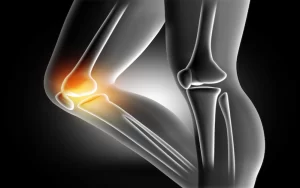
Have you been experiencing persistent pain and stiffness in your joints? It could be a sign of Osteoarthritis, the most common form of arthritis. Osteoarthritis is a degenerative joint disease that affects millions of people around the world. It can cause severe pain, swelling, and limited mobility in affected areas.
But what exactly is Osteoarthritis? How does it develop? And how can you manage its symptoms to reduce discomfort and improve quality of life? This article will answer these questions and provide information about the diagnosis, treatment options, lifestyle changes that may help alleviate symptoms, and more.
What is Osteoarthritis?
Osteoarthritis (OA) is a degenerative type of arthritis that occurs when the cartilage between joints wears away. This can cause pain and swelling in these areas, typically in the hands, knees, hips, and spine. It is one of the most common types of arthritis and usually affects older adults over 50 years old. However, it can also affect younger adults if they have suffered an injury or other joint damage earlier in life.
Symptoms of Osteoarthritis
The most common symptom of Osteoarthritis is joint pain, but there are other signs to look out for if you think you may be developing the condition.
Stiffness
If you are experiencing joint stiffness or difficulty moving your body parts like your arms, legs, or neck, this may indicate Osteoarthritis. This stiffness can range from mild to severe and typically worsens after a period of rest as opposed to physical activity.
Swelling
When bone starts rubbing against bone due to a lack of cartilage protection, it can lead to inflammation in the joint, making it appear swollen and tender to the touch. This is often accompanied by redness or warmth around the swollen area as well as intense pain when pressure is put on it.
Grating Sensation
As the cartilage starts wearing away, tiny spurs called ‘bone spurs’ develop around the edges of your joints, causing them to rub together during movement, which results in a grating sensation or even a grinding sound that can be heard when putting pressure on them directly.
Loss Of Range Of Motion
As Osteoarthritis worsens, more cartilage continues to wear away, leading to further loss of flexibility and range of motion until you eventually won’t be able to move those joints at all without feeling intense pain or discomfort.
Fatigue and Lack Of Energy
Osteoarthritis can also make activities like walking or climbing stairs feel much more difficult than usual, which can cause fatigue and lack of energy due to having less reserve left at the end of each day for physical tasks/activities.
If you believe you may be suffering from Osteoarthritis, you need to see a doctor right away so they can provide an accurate diagnosis and recommend treatment options accordingly – early intervention is key.
Treatment Options for Osteoarthritis
If left untreated, Osteoarthritis can cause significant loss of mobility, making it difficult to do everyday activities. Fortunately, many different treatment options are available for those with this condition.
Exercise
Exercise can help improve the range of motion and reduce joint pain associated with Osteoarthritis. Low-impact exercises like walking and swimming are often recommended as they put less strain on affected joints while still providing an adequate workout. Strengthening exercises such as yoga or pilates can also be beneficial, as they help build up the muscles surrounding the joints to provide more protection and support.
Medication
Non-steroidal anti-inflammatory drugs (NSAIDs) can help reduce swelling and relieve pain caused by Osteoarthritis. Corticosteroids may also be prescribed in severe cases; however, these should only be used sparingly due to potential side effects such as weight gain and increased risk of infection. Additionally, some people may benefit from taking supplements such as glucosamine and chondroitin sulfate, which have been shown to help slow down cartilage damage in certain cases.
Surgery
In some instances, surgery may be necessary to treat more severe cases of Osteoarthritis where other treatments have been ineffective. Common procedures include joint replacement surgery and arthroscopic ‘clean up’ surgeries which remove fragments of bone or cartilage that have broken away from the joint surface and are causing pain or instability.
Lifestyle Changes
Making changes to your lifestyle can also help manage symptoms associated with Osteoarthritis, such as losing weight if you are overweight or obese. This helps take pressure off of affected joints. Additionally, avoiding activities that put too much strain on them, using assistive devices such as braces or walking sticks, managing stress levels by playing games at Uptown Pokies, and engaging in regular low-impact exercises can all help reduce pain and improve quality of life.
Ultimately, Osteoarthritis is a degenerative condition that often worsens over time. However, with the right combination of treatment options and lifestyle changes, you may be able to manage your symptoms and enjoy a better quality of life.
Conclusion
Osteoarthritis is a common condition affecting many older adults over 50 years old – but it can also affect younger people who have had joint injuries earlier in life. While there is no cure for OA yet, many treatment options are available. It is best to talk with your doctor about what might be right for you so they can create an individualized plan tailored specifically to your needs.